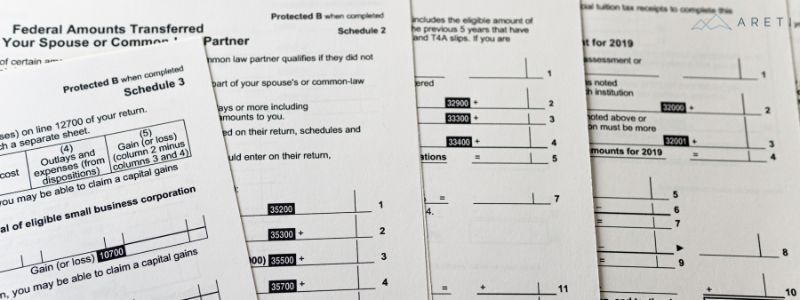Hiring an employee is a big responsibility, but it comes with a lot of perks. Not only do you get to help someone else build their career, but you also get to benefit from their skills and talents.
So, before you bring on your first employee, here are a few of the basic things you will need to do:
Business Number
You’ll need a business number. If you don’t already have one, you can set that up with the CRA by going to their website and filling out the online form. Once you have your business number, you will need to register for payroll deductions.
Payroll Deductions Account
As an employer in Canada, you must register for payroll deductions with the Canada Revenue Agency as soon as you know you will be paying employees. To do so, you’ll need to provide some basic information about your business, including your business name and number, frequency of payroll, and the number of employees. You’ll also need to provide your business number. Once you have all of this information, you can register online, by phone or by mail. Once you’re registered, payroll taxes can be deducted from your employees’ paychecks and remitted to the CRA. Registering for payroll deductions is a simple process that will help ensure that your business is in compliance with Canadian tax laws

Register for a My Business Account
If you haven’t already done so, you will want to register for a MyBusinessAccount. A MyBusinessAccount is a secure online portal that provides an opportunity to interact electronically with the Canada Revenue Agency on various business accounts. Business accounts include GST/HST (except for GST/HST accounts administered by Revenu Québec), payroll, corporation income taxes, excise taxes, and more. You can quickly access your payroll deductions to check account balances and notices at ease.
Payroll Deductions
When you pay salary or wages to your employee, you have to take source deductions from that amount. You then have to remit these deductions to the Canada Revenue Agency on the employee’s behalf. If you fail to remit the source deductions and the employer’s share of CPP and EI as required, the CRA can take action against you.
The CRA offers a payroll deduction online calculator that can be used to determine payments of appropriate payroll tax owed to CRA. This service is available to employers and employees.

Deductions You Have To Withhold And Remit
The source deductions you have to withhold and remit may be any combination of:
CPP Contributions
You will need to withhold Canada Pension Plan (CPP) contributions from your employee’s pay and remit them to CRA. The current employee and employer contribution rates are 5.7% after $3,500 with a maximum annual contribution of $3,499.80.
EI and Income Tax Deductions
You will also need to withhold Employment Insurance (EI) premiums and income tax deductions from your employee’s pay. The current EI premium rate is 1.58% for employees and 2.212% for employers.
The amount of income tax you deduct will depend on the total wages and the province or territory in which your business is located.
For more information on payroll taxes, you can visit CRA’s website or speak to a representative at your local CRA office.

T4s
Annually, you will need to file a T4 slip for each employee. The T4 slip is used to report an employee’s wages and taxes. You will need to send in the T4 slips to CRA by the end of February. You can get the forms you need from CRA’s website or by visiting your local CRA office.
The types of income and deductions you should report on the employee’s T4 can be found on this page at the CRA website.
If you are registered for e-file, you can send in your T4 slips electronically. Otherwise, you will need to mail them in.
Employee Requirements:
When you hire an employee, you will also have to get your employee’s social insurance number (SIN) and have your new employee fill out Form TD1, Personal Tax Credits Return. The TD1 is a form used to determine the amount of tax to be deducted from an individual’s employment income or other income, such as pension income.
The employee should fill out a new Form TD1 within seven days of any change that may result in a change to their personal tax credits for the year.
If you cannot get the employee’s SIN or Form TD1, you are still responsible for starting, calculating, and withholding payroll deductions.
Employees do not have to fill out new TD1 forms every year if their personal tax credit amounts have not changed.
Wrap Up:
If you have any questions about the requirements and obligations as an employer, you can speak to a representative at your local CRA office.
The sooner you get started, the better!
*This article is for informational purposes only and is not legal or financial advice.
* Source material – https://www.canada.ca/en/revenue-agency.html


